
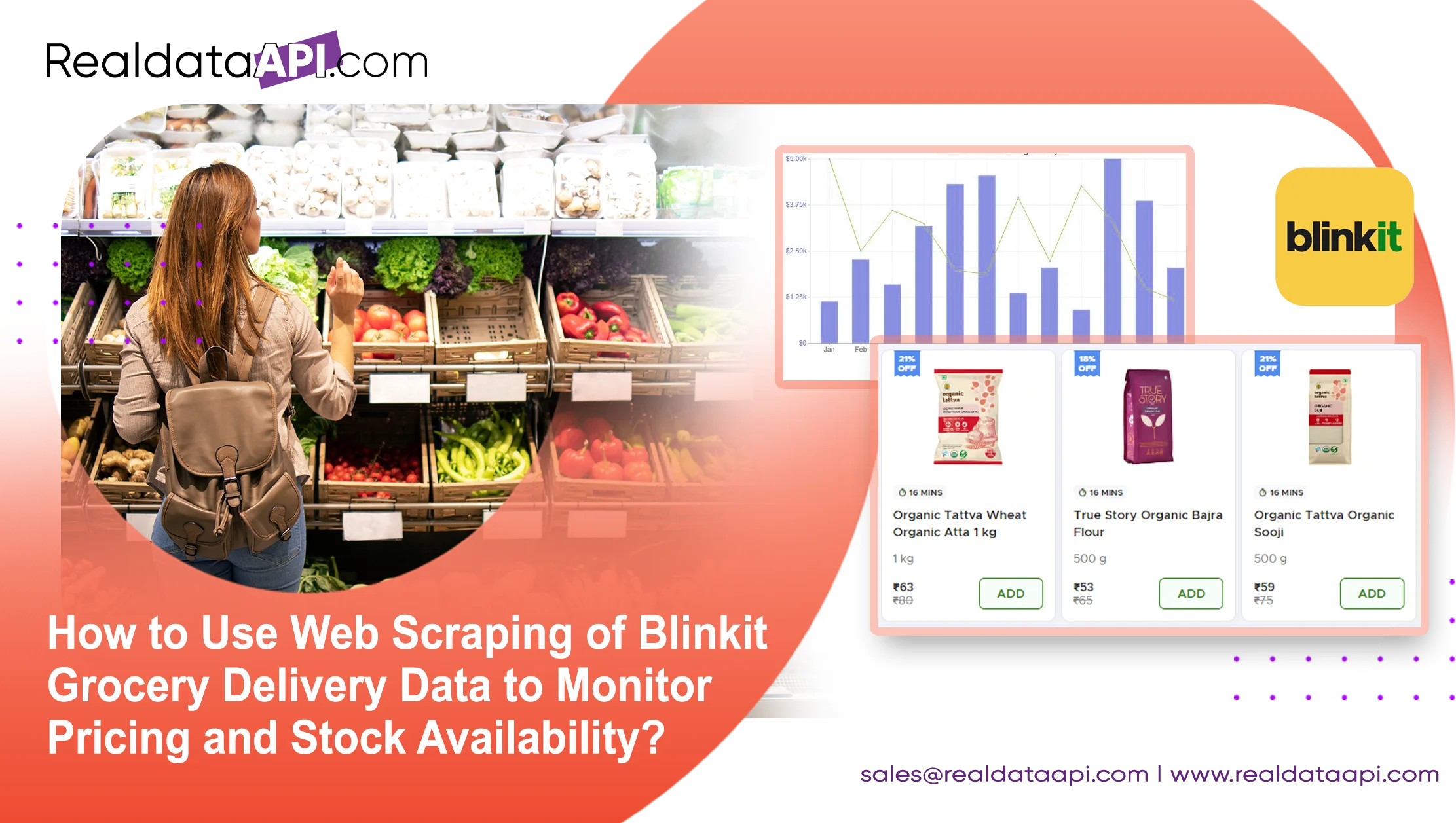
Introduction
In today's highly competitive retail and grocery market, monitoring pricing and stock availability on platforms like Blinkit has become essential for businesses looking to grow and maintain a competitive edge. Blinkit, a leading quick commerce platform, offers real-time grocery delivery services, and understanding the dynamics of price changes and stock availability is crucial for optimizing business strategies. This blog delves into the best practices to monitor pricing and stock availability on Blinkit, highlighting the benefits of data scraping, tools, and actionable insights for business growth.
By using methods to scrape Blinkit Grocery Delivery data and monitor & compare product availability and prices at Blinkit, businesses can effectively enhance their inventory management, pricing strategies, and overall market positioning.
Why Monitor Stock Availability and Pricing on Blinkit?
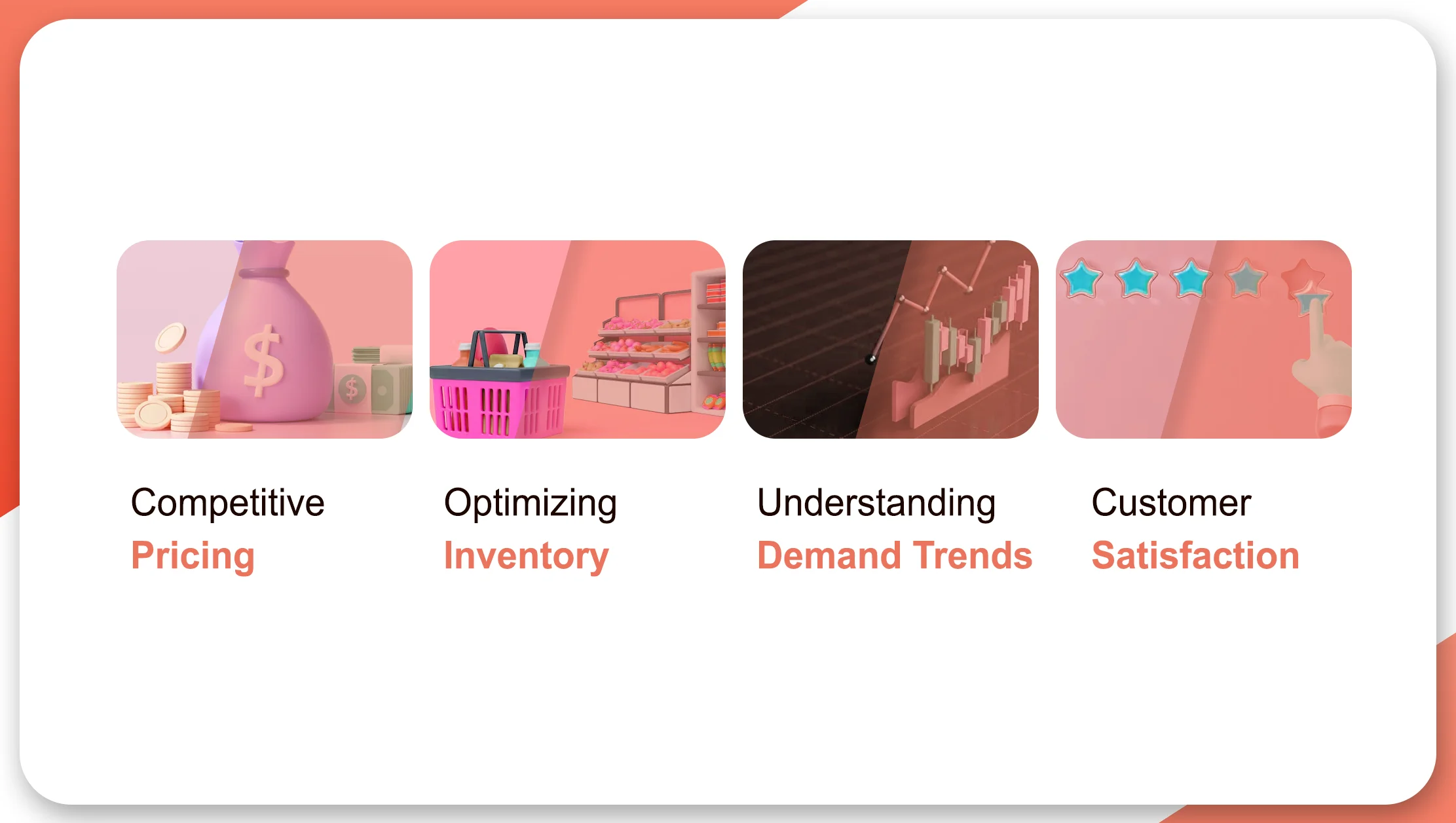
Tracking prices and stock availability on Blinkit helps businesses in numerous ways:
Competitive Pricing: By regularly monitoring Blinkit prices, businesses can adjust their prices to stay competitive and offer better deals than their rivals.
Optimizing Inventory: Monitoring Blinkit stock availability helps retailers and suppliers know when to restock, avoiding missed sales due to out-of-stock items.
Understanding Demand Trends: Real-time data from Blinkit can reveal trends in consumer demand, enabling companies to optimize product availability.
Customer Satisfaction: By ensuring that products are consistently available and competitively priced, businesses can improve customer loyalty and retention.
The Role of Data Scraping in Monitoring Blinkit Data

Data scraping tools are indispensable for efficiently monitoring Blinkit's pricing and stock availability. Blinkit Data Scraping allows businesses to extract valuable insights from the platform, including pricing trends, stock levels, and product availability.
Some of the main advantages of Web Scraping Blinkit Data include:
Automating Data Collection: Manually checking prices and stock levels across hundreds of products is time-consuming. Web scraping automates the process, making it more efficient.
Real-time Insights: With Real-time stock and price monitoring from Blinkit, businesses can get up-to-date data, allowing for quick decisions in response to market changes.
Comprehensive Data: By scraping Blinkit's product information and stock availability data, companies can gather all the details they need to make informed decisions about Pricing and inventory management.
Tools and Techniques for Scraping Blinkit Data
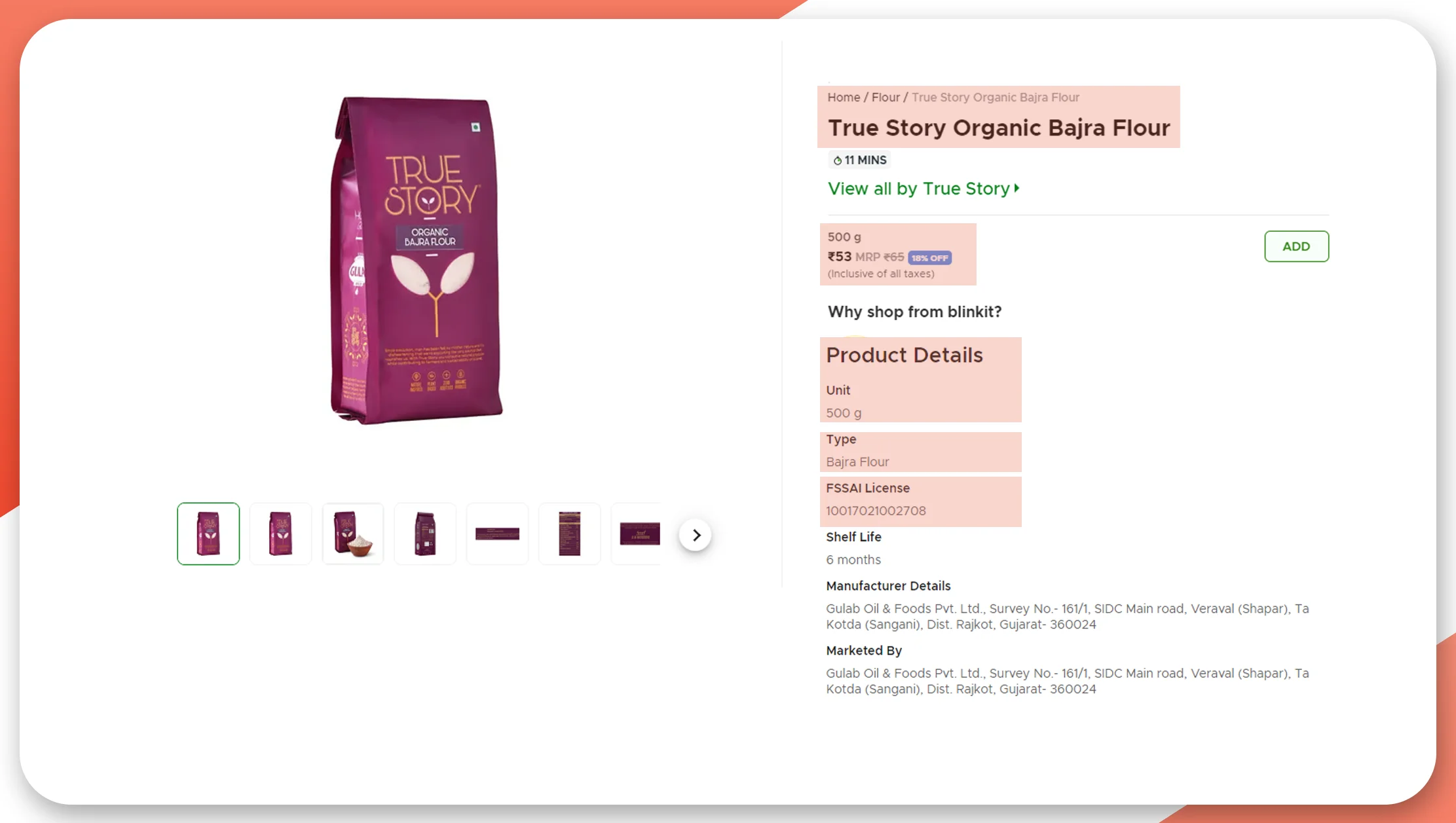
Businesses have several tools and techniques to scrape Blinkit API and gather the necessary data effectively. Below are some commonly used methods:
APIs: Blinkit provides APIs that can be leveraged to extract Blinkit price and stock data. Scraping Blinkit API allows for the structured extraction of data, making it easier to track real-time updates.
Scrapy: For more advanced users, Scrapy, an open-source web crawling framework, is an excellent choice. With Scrapy, you can easily scrape Blinkit Quick Commerce Data, collecting information such as pricing trends, stock levels, and product availability.
Proxies and Rotating IPs: Since many e-commerce platforms have anti-scraping measures, proxies, and rotating IP addresses can help avoid detection. This ensures that the scraping process remains undisturbed.
Grocery Delivery Data Scraping: Blinkit primarily deals in groceries and other fast-moving consumer goods. Grocery Delivery Data Scraping helps gather essential information on product availability and fluctuating prices, allowing for efficient stock management.
Tracking Blinkit prices and stock availability: Specialized tools and scripts can be customized to scrape Blinkit grocery data, including prices and stock status, ensuring businesses remain informed of the latest changes.
Best Practices for Monitoring Pricing and Stock Availability on Blinkit
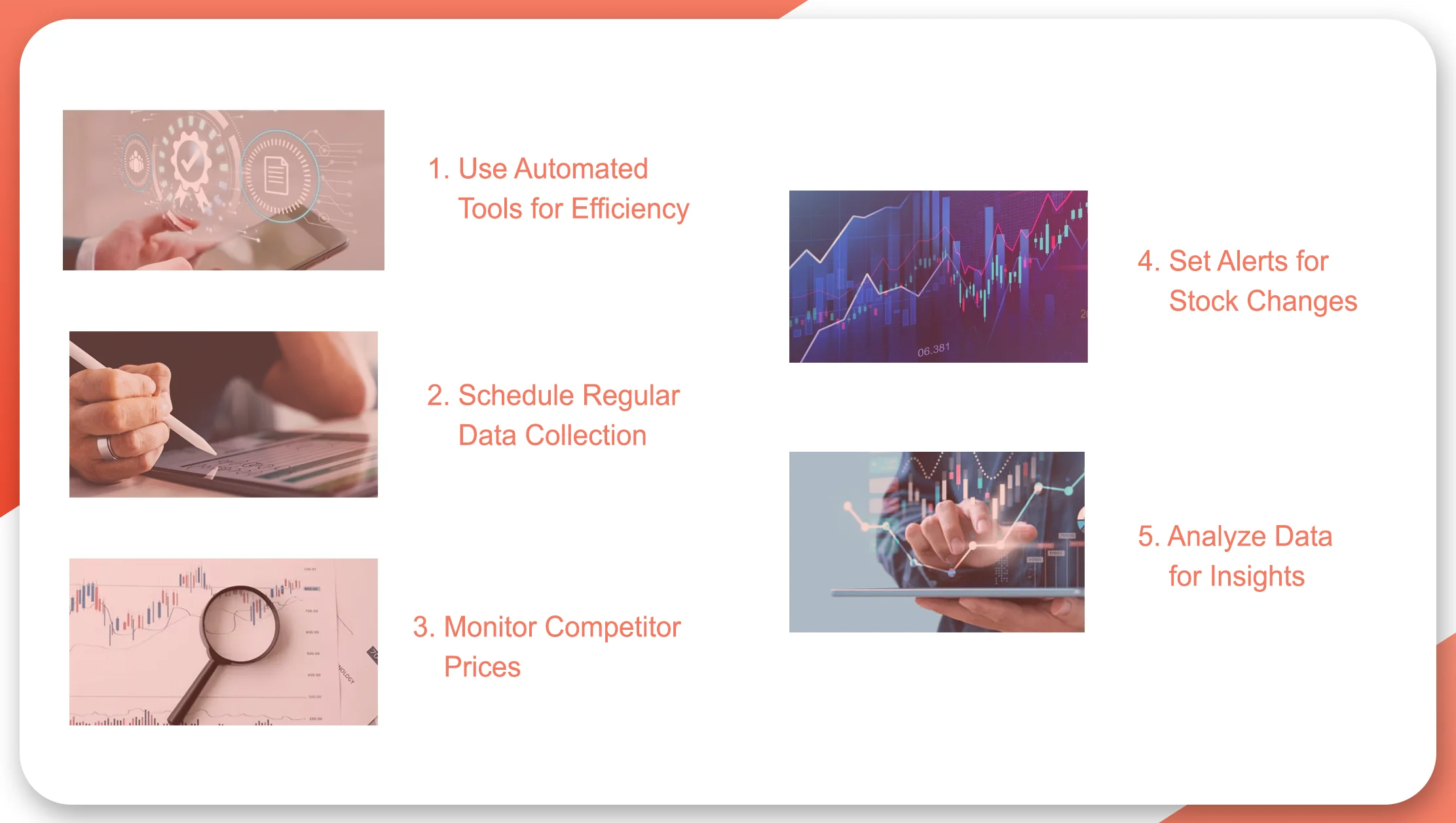
Monitoring Blinkit's Pricing and stock data involves using intelligent strategies to extract valuable insights. Here are some best practices:
1. Use Automated Tools for Efficiency
Automated web scraping tools like Scrapy or custom Python scripts can streamline data extraction. These tools help businesses regularly scrape Blinkit price and stock data without manual intervention. Additionally, companies can automate Blinkit Pricing and Stock Availability Monitoring by utilizing advanced scraping services.
2. Schedule Regular Data Collection
Collecting data at consistent intervals is crucial for identifying patterns and trends. A good practice is to set up automated schedules for Blinkit price and stock data collection. This allows businesses to record price changes over time and make data-driven decisions.
3. Monitor Competitor Prices
One key benefit of scraping Blinkit grocery data is the ability to monitor competitors. By comparing prices across different platforms, businesses can better position themselves in the market and ensure competitive Pricing.
4. Set Alerts for Stock Changes
Setting up alerts for stock changes can ensure you get all the critical updates. Being notified when a vital product goes out of or back into stock allows you to quickly adjust inventory levels or update your product offerings.
5. Analyze Data for Insights
More than simply simply collecting data is required. Businesses need to analyze it to extract valuable insights. Tools like Python, Excel, and Tableau can help analyze scraped data from Blinkit. By understanding trends in Pricing, stock availability, and product demand, businesses can develop strategies to boost sales and efficiency.
Use Cases for Monitoring Blinkit Data for Business Growth
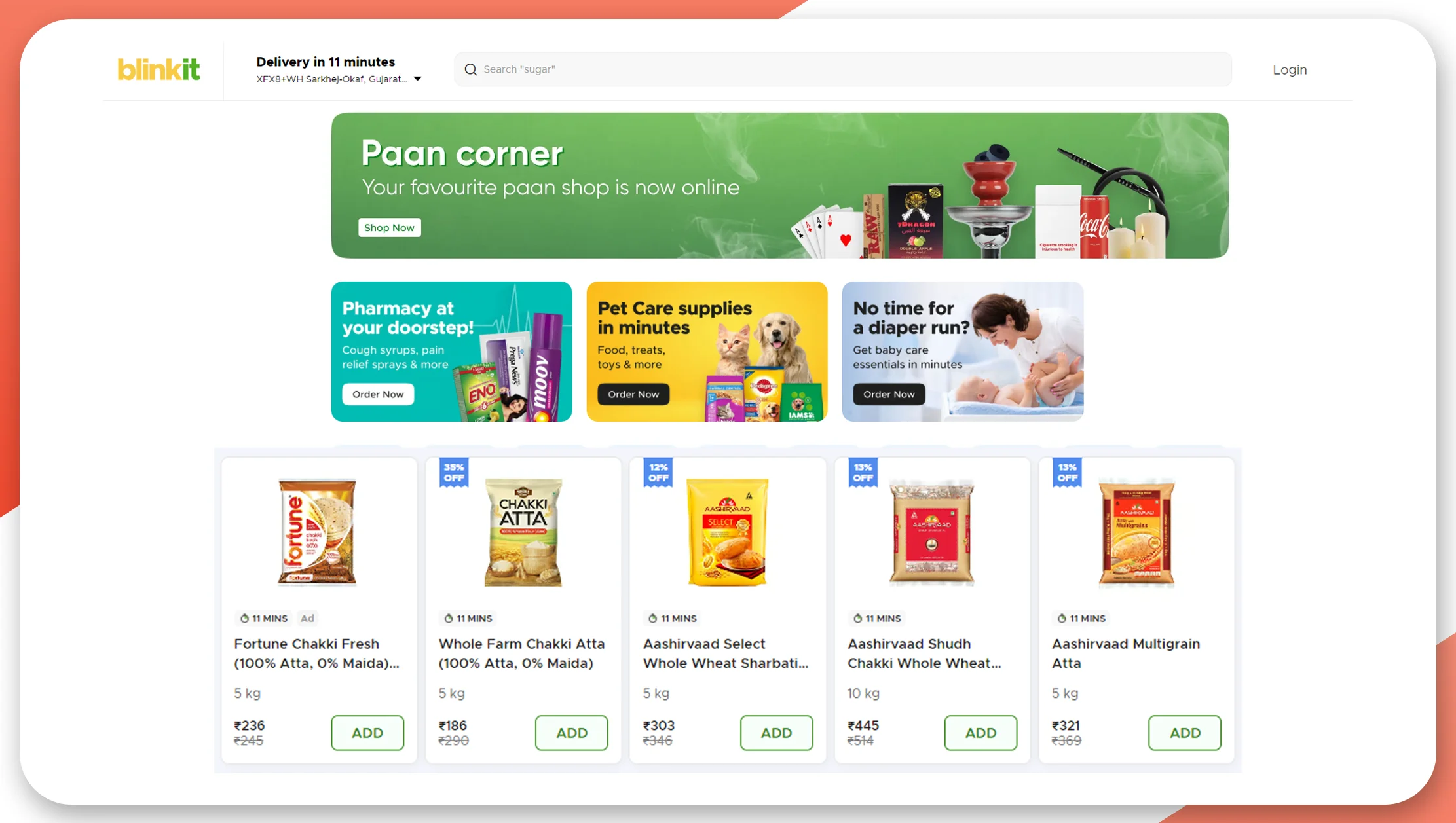
Inventory Optimization Imagine a small retailer that sells groceries on Blinkit and other platforms. By using Blinkit product availability and price tracking, they can optimize their inventory. If they notice that certain items go out of stock quickly on Blinkit, they can ensure these products are always available to meet customer demand.
Dynamic Pricing Larger retailers can implement dynamic pricing strategies based on real-time data. By monitoring and comparing prices and product availability at Blinkit, businesses can adjust their prices dynamically to match competitors and maximize profits.
Market Trend Analysis Data collected from scraping Blinkit's product information and stock availability data can also be used for market analysis. Businesses can adapt their offerings and marketing strategies by studying which products are in high demand or frequently out of stock.
Challenges in Scraping Blinkit Data
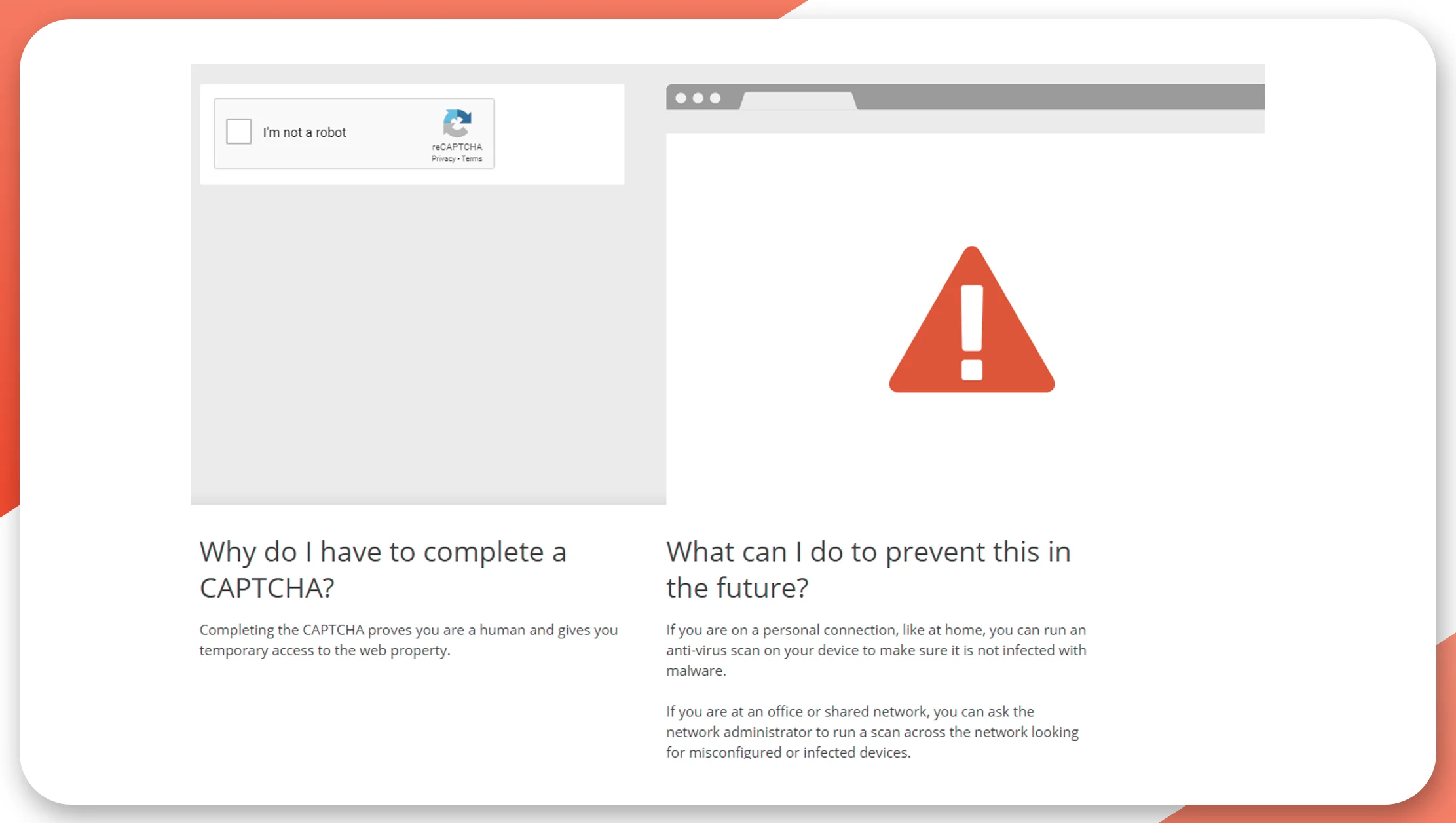
Despite the advantages, grocery data scraping , especially from a platform like Blinkit, also involves challenges. Anti-scraping measures such as CAPTCHAs, IP blocking, and rate limiting can hinder the process. However, proxies, rotating IPs, and tools like Scrapy can help overcome these barriers.
Moreover, businesses must comply with all legal regulations, including terms of service agreements and data privacy laws, when engaging in Blinkit Price and Stock Data Scraping.
Conclusion
For businesses looking to grow in 2024, the ability to monitor Pricing and stock availability on Blinkit is a game-changer. From competitive pricing analysis to inventory optimization, tracking these crucial data points provides insights that help businesses stay ahead in a rapidly changing market. Leveraging tools for Blinkit Pricing and Stock Availability Monitoring and best practices for Blinkit grocery data scraping can lead to smarter decisions and better customer experiences.
Businesses can unlock powerful insights that drive growth and efficiency by employing the right tools and techniques, such as Blinkit product availability and price tracking, extracting Blinkit price and stock data, and Grocery Delivery Data Scraping. Web scraping Blinkit data is not just about staying competitive but also about offering the best experience to customers in an increasingly digital world. Contact Real Data API to know more about this!














